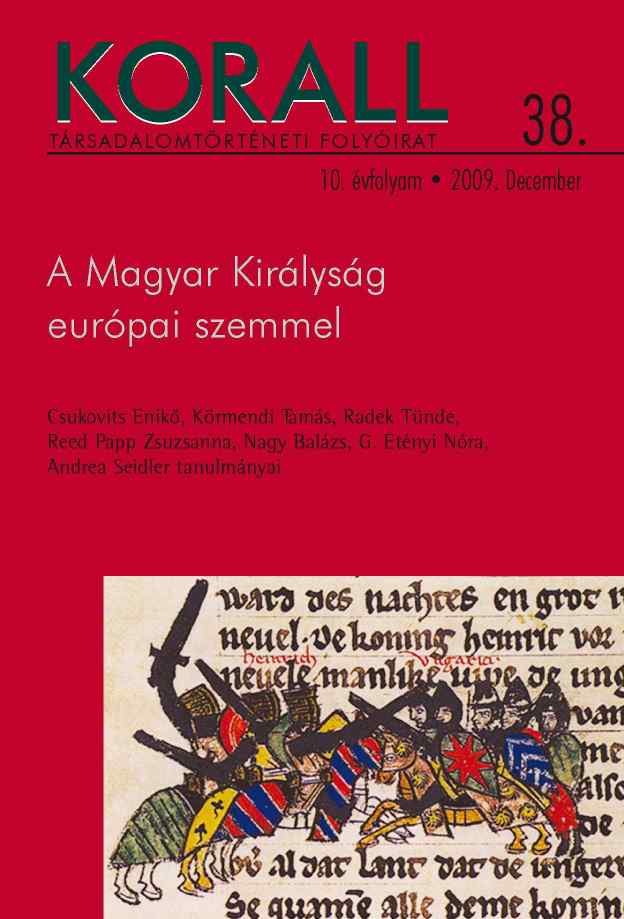A középkori magyar városok a külföldi utazók leírásaiban
Medieval Hungarian Towns in Foreign Travel Accounts
Author(s): Balázs NagySubject(s): History
Published by: KORALL Társadalomtörténeti Egyesület
Summary/Abstract: The study examines reports of foreigners who travelled in, or are well-informed about, Hungary, as well as other relevant documents from beyond the borders. Specifically, the focus of the study is medieval Hungarian urbanisation, and data about the composition of urban population. The Raffelstetten Customs Regulation (903–906) and the accounts of Ibrāhīm Ibn Ya‘qūb are valuable sources of information about contemporary Hungarian urban development in the tenth century, both with regard to information recorded and omitted. Following these early examples, an increasing number of foreign authors reached Hungary in the crusader campaigns. Several diff erent types of accounts survive from the middle of the twelfth century onwards. Information about contemporary Hungarian urbanisation was recorded by Westerners like Odo of Deuil (1147), Otto of Freising (1147), Arnold of Lübeck (1189), and Muslims such as the traveller Abū-Hāmid al-Garnātī (1153) and Al-Idrīsī, the author of a geographical gazetteer (1154). Rogerius’s account of the Mongol invasion in Hungary (1241–1242) reports important information about the town of Esztergom. The author of the Anonymi Descriptio Europae Orientalis (1308) summarises everything a fourteenthcentury foreigner may have deemed important at the beginning of the century. Bertrandon de la Broquiére (1433) recorded his observations primarily about Late Medieval Szeged, Buda and Pest. The accounts of foreign authors about Hungarian towns suggest that these sources contribute valuable information to our present understanding of urbanization in medieval Hungary. Despite the fact that none of the authors cited wrote with the expressed aim to describe contemporary urbanisation, their writings often precisely reflect the characteristics of urban centres, the multiethnic nature of towns, the role of foreigners in trade, as well as the relationship between town and trade. While early texts reveal few shared characteristics between Hungarian and Western European towns, the sources from the post-Árpádian era suggest that Hungarian cities were increasingly similar to European urban models: instead of emphasising the differences, fourteenth- and fifteenth-century texts tend to view Hungarian towns as integral parts of the European urban network.
Journal: Korall - Társadalomtörténeti folyóirat
- Issue Year: 2009
- Issue No: 38
- Page Range: 79-90
- Page Count: 12
- Language: Hungarian

